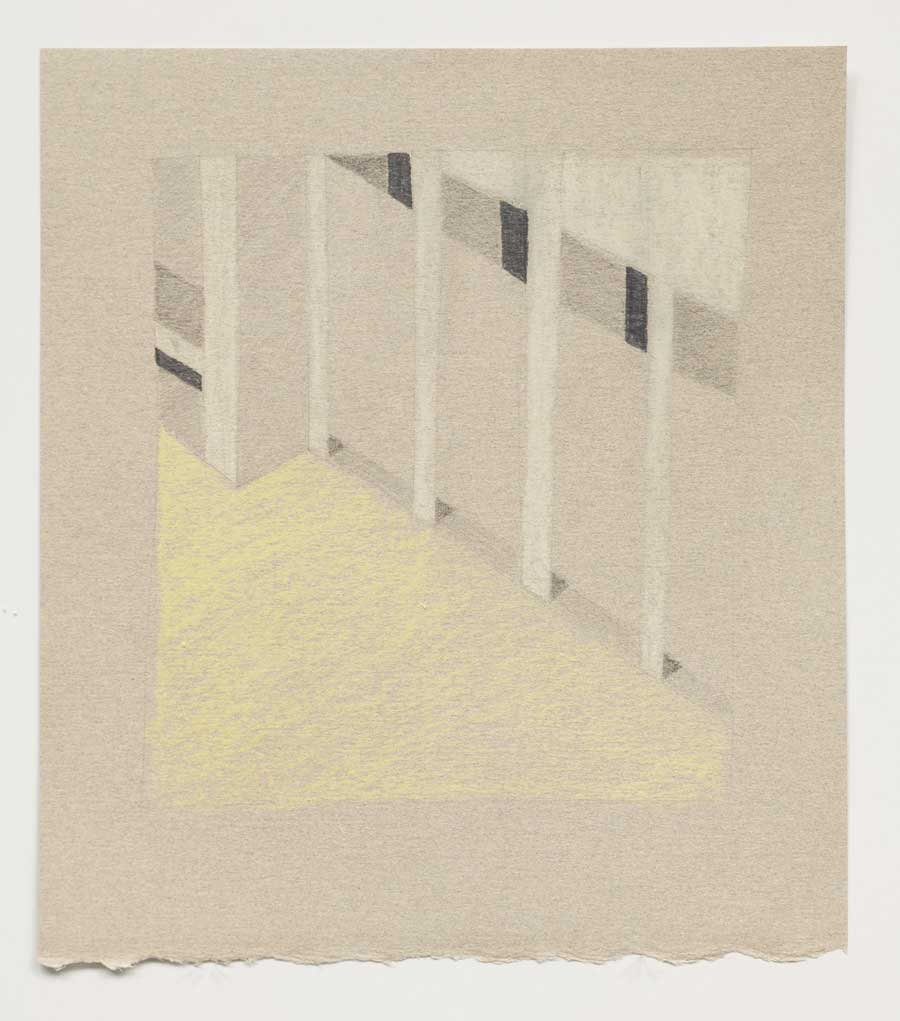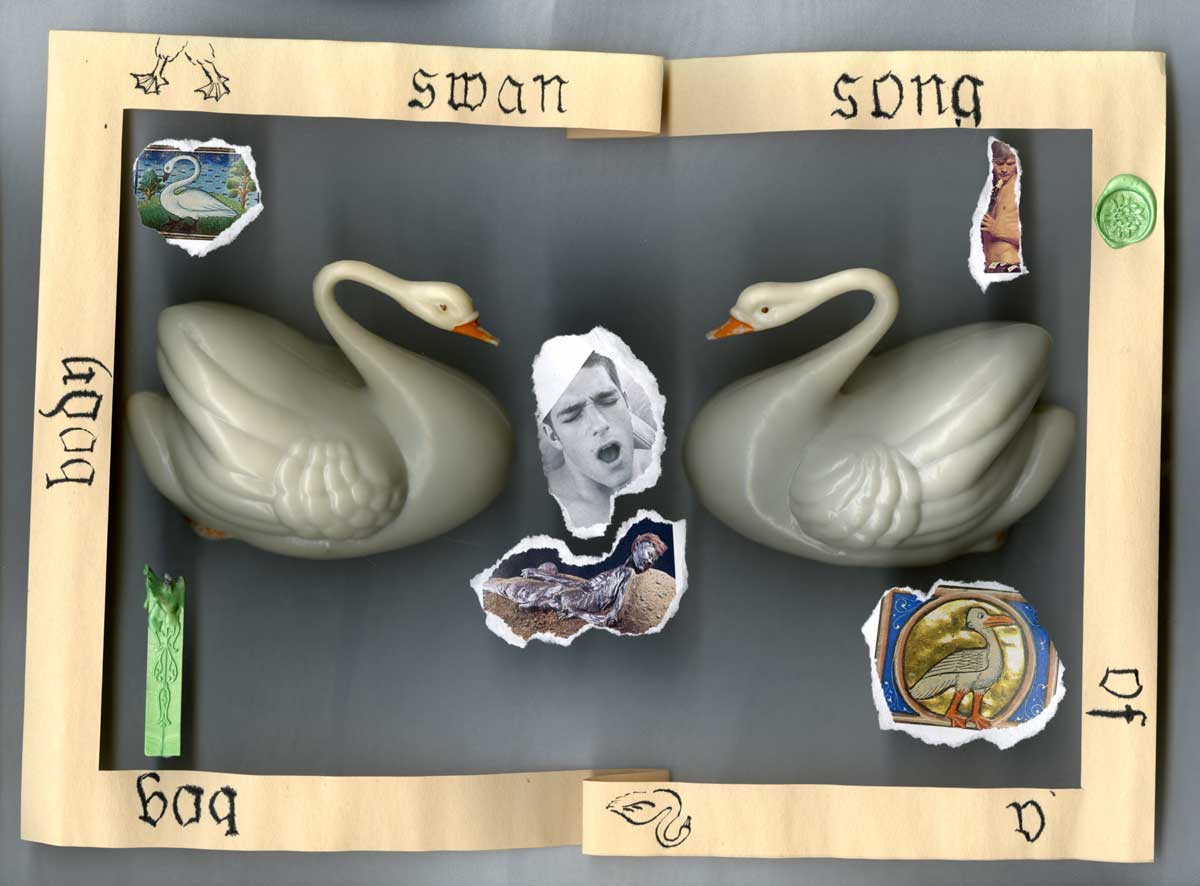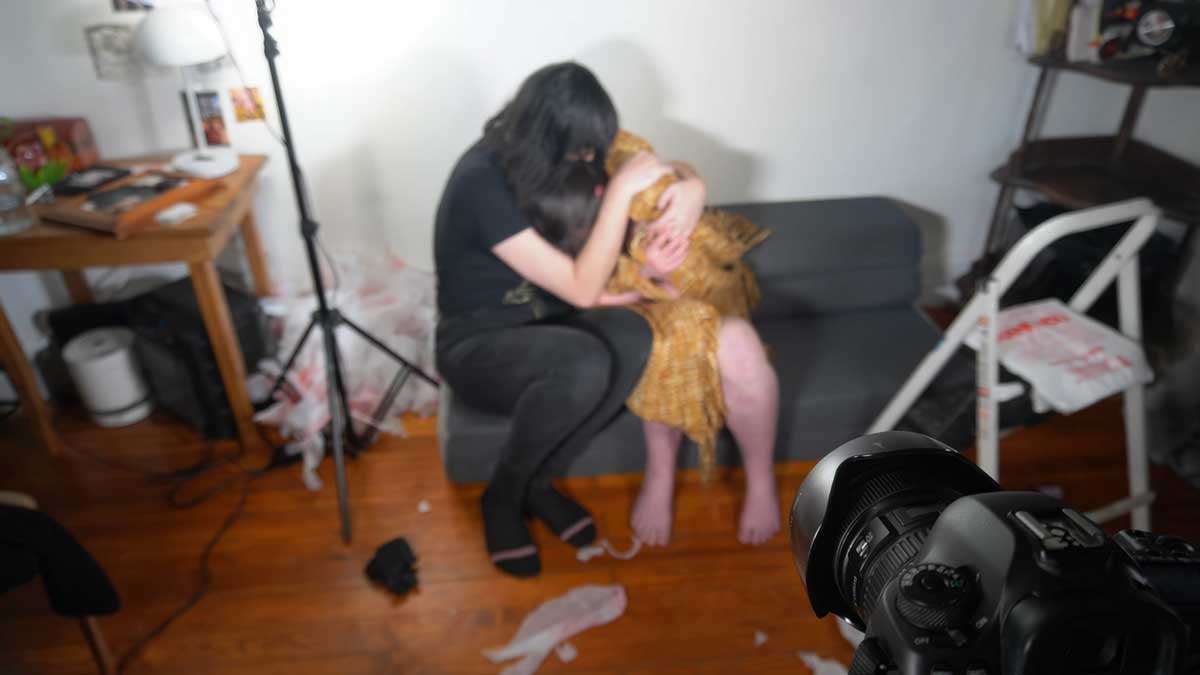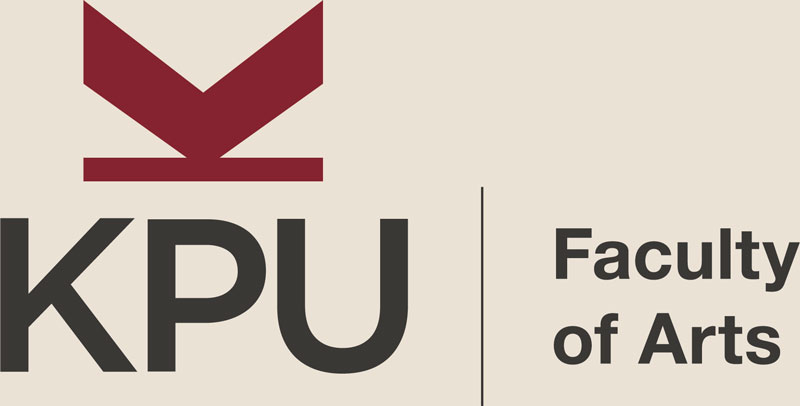G.9 Queer and Horny: Making, Writing, Theorizing and Exhibiting Queer Art
Sat Oct 21 / 13:45 – 15:15 / KC 101 103
chair /
- Christopher Jacques Lacroix, Simon Fraser University
This panel takes its departure point from bell hooks’ understanding of queerness as “not being about who you’re having sex with…but queer as being about the self that is at odds with everything around it and has to invent and create and find a place to speak and to thrive and to live.” hooks—who identified as queer-pas-gay—positions queerness and queer identity as an intellectual conclusion, disregarding the fact that queer people are at odds with the world around them precisely because of who they are having sex with. While the teleological function of queerness highlighted by hooks is politically tempting, it is necessary to acknowledge that the desexualisation of queerness is an imperative step to becoming an embraced subject of the colonial nation-state. This panel looks to the practices of contemporary artists to imagine how foregrounding practices of embodied queer desire produce opportunities to—as hooks put it—“invent and create and find [places] to speak and to thrive and to live.” In other words, what does it mean to be a horny queer and make, write, canonize, theorize and/or exhibit queer art?
keywords: queer, erotic, research creation, violence
session type: panel
Christopher Lacroix is a PhD student in the School for the Contemporary Arts at Simon Fraser University. His work yields queer perspectives through conceptually and formally absurd explorations of materials and objects. These queer perspectives are often a blend of humour, refusal, and aspirations for alternative relations or futures. Lacroix received an MFA from the University of British Columbia (2018) and a BFA from Toronto Metropolitan University (2012). In 2018 he was awarded the Lind Prize for emerging lens-based artists and was long-listed for the 2021 Scotiabank New Generation Photography Award. He lives and works in Vancouver which is located on the unceded territories of the xʷməθkʷəy̓əm (Musqueam), Sḵwx̱wú7mesh (Squamish), and Sel̓íl̓witulh (Tsleil-Waututh) nations.

August Klintberg, Period room 1-2, 55” x 29”, pigment on rice paper, 2022
Conjuring cruising: strategies in the sexual archives
- August Klintberg, Alberta University of the Arts
Two studio projects by August Klintberg, Portal and L’homme blessé, focus on desire and erotics as applied in the political arena of so-called “public space” by representing cruising and sex practices of men who have sex with men.
Portal (2020-21) responds to a troubling historical event: in 1979, a man making homophobic advances was attacked and killed by a pair of men-who-have-sex-with-men cruising Central Memorial Park in Moh’kins’stis (Calgary). Found at the scene of the murder was a silver bomber jacket. Working with textile artist Jolie Bird, Klintberg recreated the silver jacket in three sizes: one for a child, one for a young person, and one that is sized to fit the artist himself. The pattern pieces for these garments were then used to make a series of stencils, monoprints, and proposals for monuments, and the jackets are presented through a series of photographs arranged to resemble a police incident room.
L’homme blessé (2022–present) is a series of responses to the screenplay and film of the same title (1983), which tell the story of a young man who discovers opportunities for gay sex and romance via the men’s toilets at the Gare de l’Est. The train station’s men’s room was a popular cruising site until it was renovated in 2006. Klintberg’s project accesses the film’s footage, anecdotes from his personal network, and fantasy to develop a series of drawings titled Period room that conjecture about and conjure the architecture of this site.
Both projects wrestle with the archive writ large. In the case of Portal, the artist relies on contemporary news coverage, but also oral history compiled by researcher Kevin Allen. L’homme blessé uses film as a primary source, but Klintberg has also engaged with the modified space of the Gare de l’Est. Building on Michel Foucault and Thomas Osborne, this paper uses the archive as a place not of evidence, but of possibility and potential. Finally, the works themselves help Klintberg define his own position as a queer scholar who makes work about non-straight sex practices while working in a deeply conversative province.
keywords: queer, archive, drawing, research creation
August Klintberg (he/him, formerly Mark Clintberg) is an artist who works in the field of art history. He teaches studio, research methodologies, and art history at AUArts and is represented by Pierre-François Ouellette art contemporain (Montreal).
Radically Art Historical: Attila Richard Lukacs and the Weight of History (1980–1995)
- Johnny Willis, University of British Columbia; Wrightwood 659 Chicago
“Being a good artist is like committing the perfect crime—you don't get caught.” —Robert Rauschenberg, 1961
“Being an artist and a criminal is pretty well the same thing. Because you have to have the same genius.” —Attila Richard Lukacs, 2023
“Radically Art Historical” examines the first fifteen years of the Vancouver-based painter Attila Richard Lukacs’s infamous career as Canada’s “bad boy artist” in the late 1980s and early 1990s. Produced in direct collaboration with the artist, the project underscores the degree to which the artist’s appropriation of art history, and Caravaggio in particular, enabled his monumental scenes of queer male sexuality at the height of the AIDS crisis to enter into the spaces and collections of major international museums. Passed through the art historical sieve of respectability, gay sex finally had a place on the wall of museums—the artist’s “perfect crime.”
Also central to the project is the artist’s ten year tenure in Berlin from 1986–1996, directly before and after the fall of the Berlin Wall. In this period Lukacs came into international spotlight through his paintings that thematized German division, reunification, and historical memory. Through his massive tableaux featuring hyper-eroticized skinheads as historical actants, Lukacs launched a Derridean campaign of deconstruction, simultaneously citing and undercutting the ostensible oppositions of East and West, butch and fag, and gay and straight.
At its core, “Radically Art Historical” works to recuperate Lukacs’s defining work that has since receded from public attention as one of Canada’s most significant living artists, underscoring the degree to which the work unravels the often neglected relationship between sex, art history, and politics.
keywords: contemporary art, Baroque art & Caravaggio, deconstruction & Derrida, AIDS history, German history
Johnny Willis is an emerging curator and scholar of queer and non-binary art history. They are Associate Curator of The First Homosexuals (1869-1935), a large-scale international exhibition series sponsored by Wrightwood 659 Chicago (the first exhibition ever mounted to examine the immediate artistic aftermath of the “invention” of the homosexual in 1869, the year the word was coined, and the largest exhibition of queer art history ever mounted). They received their Bachelor’s in Art History summa cum laude from the University of Pennsylvania where they trained extensively with the founding figure of queer art history Jonathan David Katz. As of summer 2023 they hold a Master’s in Art History from the University of British Columbia where they held two university research fellowships and wrote a thesis on the contemporary Canadian painter Attila Richard Lukacs.

Alex Gibson, Swan Song of a Bog Body, Inkjet print, 18” x 24”, 2023
Horny Humid Myths: Queerness and Archipelagic Vanishings
- Alex Gibson, University of British Columbia; Wrightwood 659 Chicago
As a queer non-binary Barbadian artist, my research interests lie in non-sites and the spaces in between heteronormativity as places to harness queer strength and find safety, while elevating gays, girlies, f*gs, and all manner of queer folk to an elemental—humid—mythical plane of existence.
Barbados is an island in the Caribbean archipelago. In Glissantian terms, “The archipelago is neither closed nor contained; it is an opening. It has neither beginning nor end in time or in space, or even in our conception of it” (Wiedorn, 5). My practice investigates the archipelago as a rhizomatic entity where queer folks from the region (and beyond) can situate themselves into these in-between spaces, infinite in its extensions and potentialities. Here in non-space—heterotopias—queers can find themselves, and each other, free from discrimination, bridging distances, to act out their natural, sticky-moist desires: a steamy sauna cruise, balmy beach romp, or clammy skin contact.
More importantly, my work seeks reveal these spaces to mine sites of safety and celestial embodiment for queers in regions like the Caribbean. A region heavily steeped in myth, often regarded as “paradise”, it is also a place that makes queer existence near impossible due to centuries of multiple colonisations. A doubling of myth occurs onto queer folks, and a certain form of “vanishing” or evaporation takes place in queer existence in order to self-preserve. My work proposes a reclamation of this “vanishing” or myth, for queers to embody transfigurative qualities to extend beyond a heteronormative bland existence, and to occupy a rightful celestial, elemental, humid plane. Here in the thick air, queers can find home through each other. Through the folding of image, video, installation, physical and digital, my work seeks to project glimpses of the potential held in these spaces.
Distance here comes into question. How might ideas of home and memory be found within effervescent humidity? Growing up in a humid tropical region, now living in a humid temperate region (Unceded territories of the xʷməθkʷəy̓əm, Sḵwx̱wu7mesh and səlilwətaɬ peoples; Vancouver; Pacific Northwest), how might humidity become the transportive thick-air space to evaporate into?
keywords: queer, mythology, Caribbean, archipelago, island
Alex Gibson is a queer Barbadian artist who filters digital and material practices to generate and archive memory, time, and ephemera through image, video, and installation. As an immigrant genderfluid artist, their work focuses on queer identity, space and temporality. Gibson’s work has been exhibited at Capture Photography Festival (Vancouver), Wil Aballe Art Projects (Vancouver), Tomato Mouse (New York), Number 3 Gallery (Vancouver), Artists Alliance Barbados (Bridgetown, Barbados), RBC Media Gallery (Vancouver).

Will Scullin’s Viral Tweet (screenshot), 2022
On the Straight and Narrow: Desexualizing Felix Gonzalez-Torres’ Untitled (Portrait of Ross in L.A.)
- Drew Burton, Queen’s University
In 2022, the Art Institute of Chicago (AIC) reinstalled Felix Gonzalez-Torres’ 1991 work, Untitled (Portrait of Ross in L.A.), a 175 lb mound of individually-wrapped candies that visitors are invited to take. Untitled is an abstract portrait of Gonzalez-Torres’ dying lover Ross Laycock, with the diminishing pile allegorically corresponding to Laycock’s body as he wasted away from AIDS-related illness. While Untitled is not an explicit representation of sex or sexuality, both are vital to understanding its meaning, poetics, and significance. The new label that accompanied the work in 2022, however, omitted this personal and political context, discursively detaching Untitled from its queer roots. Amid the so-called “culture wars,” the state-led repression of queer life and sex, and the censorship of queer art that defined its own historical moment, Untitled snuck queer sex and queer bodies into the museum. Since then, it has consistently been accompanied by context labels. What does it mean when three decades later this context is removed and queer sex is snuck out of the museum? Such institutional refusal to address gay life and death eerily evokes efforts to repress gay sex as a public health measure during the HIV/AIDS epidemic. This paper unpacks the social, political, and historical circumstances around the reinstallation of Untitled in 2022, including increased attacks on queer life in the US, the rise in popularity of Gonzalez-Torres’ work on the art market, and the AIC’s response to critiques of the new label.
keywords: queer abstraction, HIV/AIDS, art market, censorship, museum studies
Drew Burton (he/him) is a PhD candidate in Art History at Queen’s University. His SSHRC-funded research examines the networks of players involved in public campaigns and behind-the-scenes negotiations to censor queer art in North America from the 1980s to the present. Through the close analysis of several case studies, this project unpacks the nuanced and multiple entangled forces (social, political, and financial) that enable the continued suppression of queer art and artists. His broader research interests include modern and contemporary art, so-called “culture wars,” public arts funding, institutional critique, and pedagogy. He has co-curated exhibitions at the Agnes Etherington Art Centre (2019) and the Union Gallery (2022). He has also served as co-chair of the Board of Directors at Modern Fuel Artist Run Centre (2020 – 2022).

New Hole, 23 Bags, Performance, Digital Video Still, 2023
THANK YOU!: Trans Art Collective Exploring Sex & Violence as Mediums of Art
- Lorelei d’Andriole, Michigan State University
This presentation explores the questions and discoveries made by the film 23 Bags by the Michigan performance art group, New Hole, a work that explores BDSM performance, intense violence, and queer joy. Drawing inspiration from renowned artists such as Chris Burden and Bob Flanagan, our collaboration as a trans* performance art collective aims to challenge societal norms, unraveling the intricacies of pleasure, pain, and personal agency. As a trans* academic, I am particularly interested in participating in this panel as an opportunity to build community and share strategies for navigating the world of contemporary art and scholarship when the artwork uses consensual violence, personal liberation, and sexual expression as mediums of fine art.
Diving into the joy found through pain, our collective aim is to dismantle the notion that trans* experiences are solely defined by struggle and hardship. Further distancing ourselves from sexless contemporary Queer Art which eroticizes the trans* body as an object to be looked upon or a shifting architecture. This hour-long performance of consensual asphyxiation within a performance context demands viewers’ attention and once the performer can no longer take it, you are gifted a rare glimpse of tenderness as the two visible performers embrace and give aftercare. Our film becomes a celebration of trans resilience, self-discovery, and the reclamation of agency.
The film we have produced pushes boundaries, intertwining the erotic with the cathartic. It captures the raw essence of BDSM performance, inviting audiences to confront their preconceptions and explore the transformative power of consensual violence within the context of personal liberation and sexual expression. However, the question arises: where can provocative queer art find a suitable platform for exhibition? By discussing the challenges we face in sharing this film within institutional conferences, we hope to uncover ways to navigate and challenge existing structures.
keywords: BDSM, transgender, queer, violence, sex
Lorelei d’Andriole is an American artist, musician, and assistant professor in Electronic Art and Intermedia at Michigan State University. As a queer trans* woman, d'Andriole has been producing work at the intersections of intermedia, sound, and transgender studies. Born in Oklahoma City, Oklahoma, d’Andriole earned her MFA with honors from the University of Iowa’s Intermedia program. d’Andriole has completed artist residencies at Wave Farm and the Institute for Electronic Art at Alfred University and was a Visual Arts Fellow at the Leslie Lohman Museum of Art in New York City from 2021-2022. She is currently serving as a board member for the International Alliance for Women in Music where she advocates for queer and trans* composers, artists, and musicians.

